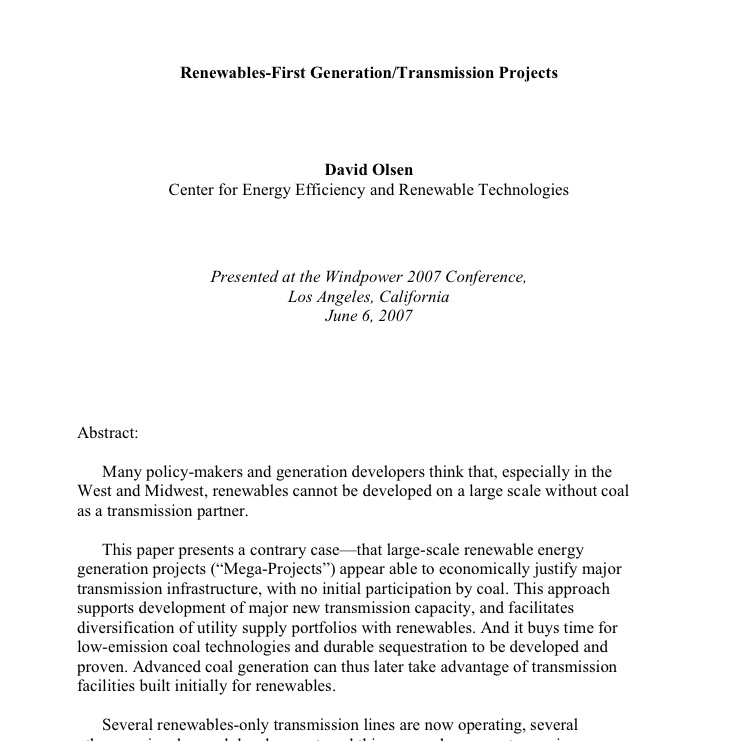Olsen, David. 2007. “Renewables-First Generation/Transmission Projects.” Washington, DC: American Wind Energy Association.
Abstract:
Many policy-makers and generation developers think that, especially in the West and Midwest, renewables cannot be developed on a large scale without coal as a transmission partner.
This paper presents a contrary case—that large-scale renewable energy generation projects (“Mega-Projects”) appear able to economically justify major transmission infrastructure, with no initial participation by coal. This approach supports development of major new transmission capacity, and facilitates diversification of utility supply portfolios with renewables. And it buys time for low-emission coal technologies and durable sequestration to be developed and proven. Advanced coal generation can thus later take advantage of transmission facilities built initially for renewables.
Several renewables-only transmission lines are now operating, several others are in advanced development, and this approach appears to require no changes to FERC tariffs. It may, however, require utilities to plan their portfolios and operate their capacity resources differently, in order to take best advantage of low-cost energy resources. It also creates an opportunity for utilities to join with equipment manufacturers and generation companies in consortia assembled to build, own and operate renewables Mega-Projects.
Download full report (pdf) here.
Contents
1. Market and Policy Context of Renewables-First Transmission
1.1 Renewables Market Transformation
1.2 Buying Time for New Coal Technologies
2. Renewables Mega Projects
3. Engineering Design of Renewables-First Transmission
4. Illustrative Economics 10 4.1 Frontier Line 3,000 MW Wind-Transmission Scenario
5. Open Access Tariff Issues
6. Existing and Planned Renewables-First Transmission Projects
7. Marketing and Delivery Challenges
7.1 Building Supply Around Energy Resources
7.2 Marketing Challenges
7.3 Transmission Planning and Delivery Challenges
8. Opportunities for Policymakers, Industry and Advocates
Tables
3-1. Over-Built Generation Capacity vs. Transmission Line Loading
4-1. Wind and Gas-Fired Generation Project Data
4-2. Transmission Cost Data
4-3. Financing Assumptions
4-4. Cost and Benefit of Generation-Transmission Project
Figure
4-1. Regional Power Cost Difference v. Line Utilization

